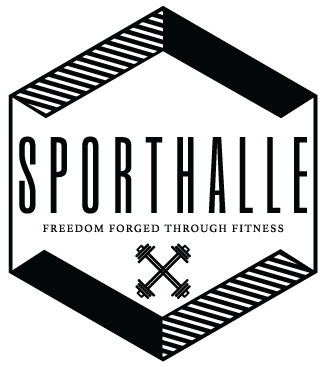Today there are so many fitness programs and classes available it can be overwhelming to decide how to train. If you are researching training programs you have probably heard of High Intensity Training (HIT) or High Intensity Interval Training (HIIT). HIT is incorporated into many classes and has grown in popularity due to its ability to produce fast and effective results. But what exactly is it…and more importantly how do you decide if it’s right for you?!
Lets answer your top 5 questions about High Intensity Training so you can feel confident in finding a gym, personal trainer, or other fitness option in your local area.
Your top 5 High Intensity Training Questions:
- What exactly is HIT?
- Is HIT a good fit for me?
- What does a HIT workout look like?
- What types of movements are in a HIT workout?
- What are the benefits of HIT?
1.What exactly is HIT?
High intensity refers to a level of intensity that is measured by a high power output or a high rate of perceived exertion. This will be unique to every individual.
A high intensity strength workout will cause high motor unit recruitment. This means it activates a majority of the muscles in your body and generally requires loads >80% of your 1 rep maximum to achieve the desired stimulus.
Near maximal exertion for aerobic work or “cardio” this would be performing exercises at a pace that elevates heart rate and gets you sweating and breathing heavy. You would work at a pace that would be unsustainable for more than a few minutes at a time. These workouts are often set up in an interval fashion where you go hard for a short period of time and then rest. This allows you to repeat the effort several times until the desired training stimulus is achieved. As you train in this way you will improve your ability to train hard for longer periods of time and delay the “burning” feeling commonly associated with HIT.
2. Is HIT a good fit for me?
High Intensity Training is a great fit for anyone looking to get fast results. The key is determining what the definition of “Intensity” is for you. Jumping into a class workout performing movements you haven’t mastered and loads your body is not ready for is a big no-no.
Working with a coach who has experience scaling workouts to meet your needs and abilities is the key to having long term success with HIT training. They will help you choose the exercises, weights, frequency, and duration of your training session to ensure your body gets the stimulus you need with risk of injury or burnout.
Be weary of anyone who promises vomiting or intense pain from their workouts. It’s not an effective way to get the results you want!
3. What does a HIT workout look like?
For a high intensity strength training workout you will be using heavy loads. Ideally greater than 80% of your 1RM as this is the ideal load for gaining strength, building muscle, and improving body composition.
Often times performing multiple exercises back to back at moderate intensity (60-80%) can produce a similar training result. It is important that the movements are carefully selected to ensure that form is not compromised and that the rest time is adequate enough to allow for repeated effort.
If you aren’t familiar with exercises, weightlifting, or just aren’t sure of what your body is capable of then you will benefit from working with a certified and highly qualified trainer or coach. They will analyze your movement and help you develop the motor control and stability to prepare your body for more high intensity forms of exercise.
4. What types of movements are in a HIT workout?
Any type of movement can be incorporated into a HIT workout. Resistance training with barbells, dumbbells, or kettlebells are all great tools. You can incorporate resistance bands, chains, battle ropes or medicine balls. Gymnastics implements like pullup bars or rings. Even simple bodyweight movements and plyometrics can be used.
The most important factor when choosing movements is that you have technical proficiency with the movement and can perform multiple reps at a given load with exceptional form. If your form tends to break down when you are fatigued or you have mobility issues that alter your technique then that movement is not a good choice for the high intensity training session.
5. What are the benefits of HIT?
There are numerous benefits that come from High Intensity Training.
The lactic acid produced from properly executed high intensity training will stimulate the release of growth hormone stimulating sugar and fat metabolism. It also increases protein synthesis which means you will build more lean muscle. HIT training also elevates your metabolism helping you burn more calories both during your training session and for many hours after you’re done.
You also tend to accomplish more work in less time with HIT training. This makes it a great way to train for busy folks who can only train 20-30 minutes 2 or 3 days per week. Just remember that training is only half of the equation. Adequate sleep and proper nutrition make sure that your body recovers from and adapts to the training stimulus, giving you the results you want.
There you have it. Answer to your Top 5 questions about HIT training. If you’re ready to talk to a coach to see if High Intensity Training is right for YOU then get in touch with one of our coaches today for a free consult!
